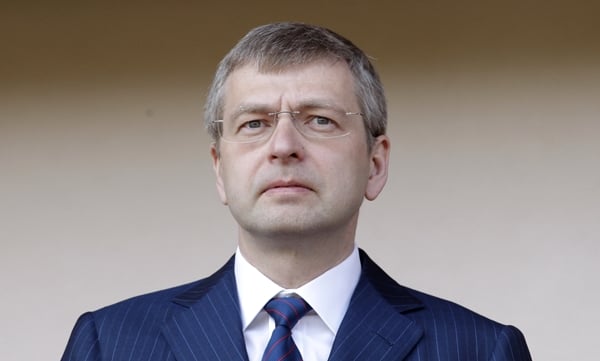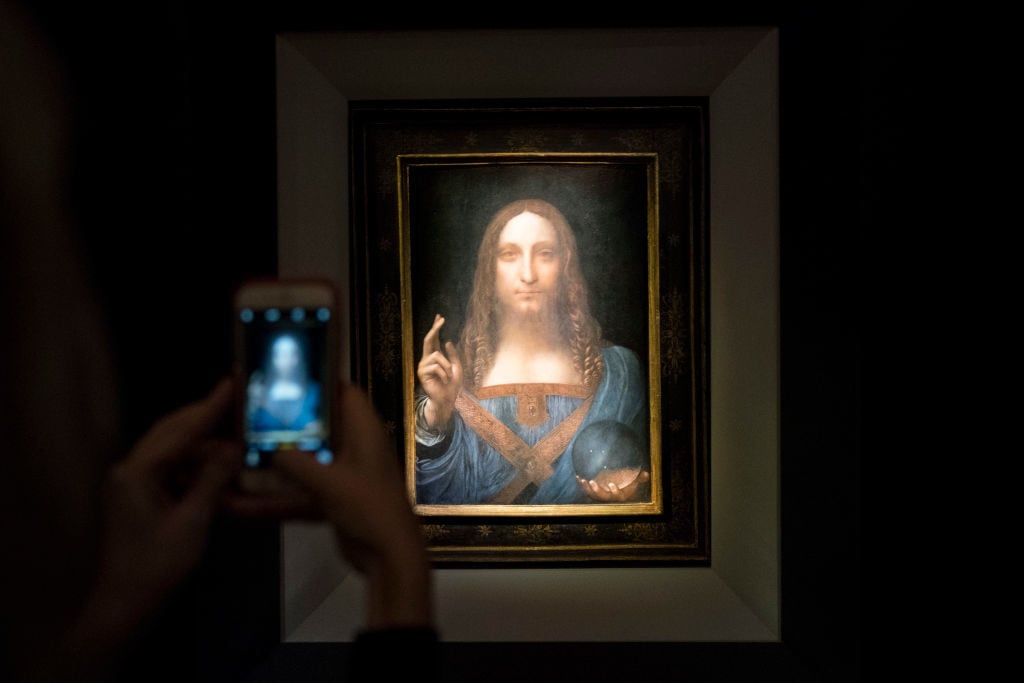Law & Politics
Russian Billionaire Dmitry Rybolovlev Accuses Sotheby’s of Price Inflation in a $380 Million Suit
Despite turning hefty profits on artworks, the Russian billionaire continues his international legal fight with dealer Yves Bouvier.

Despite turning hefty profits on artworks, the Russian billionaire continues his international legal fight with dealer Yves Bouvier.

Eileen Kinsella

Russian billionaire Dmitry Rybolovlev has come out swinging—once again—in his years-long international art fight with dealer and former freeport owner Yves Bouvier. Now, he has Sotheby’s in his crosshairs.
This past summer, Rybolovlev scored a partial win in a New York court after his legal team requested all communication between Bouvier and the auction house regarding artworks that the Russian collector eventually bought. He claims that he was sold works at inflated values and estimated that he overpaid to the tune of $1 billion on some 38 works because of price misrepresentations. Sotheby’s was allegedly involved in transactions for about a third of the works, Rybolovlev claims.
The businessman sought all documents related to the value of the works bought or sold in a transaction involving Sotheby’s and Bouvier, as well as depositions on topics including the works’ sale price and market value, the business relationship between Bouvier and Sotheby’s, and the circumstances under which Bouvier obtained valuations for the works.
Rybolovlev’s current complaint, filed on Tuesday in US District Court, Southern District of New York, asserts that he is currently not allowed to use those documents to support the allegations of the complaint. He said he intends to seek permission to use them.

A visitor takes a photo of the painting ‘Salvator Mundi’ by Leonardo da Vinci at Christie’s New York. (Drew Angerer/Getty Images)
Despite this, the 24-page complaint, a copy of which was obtained by artnet News, has extraordinarily detailed information about the email communications between Bouvier, Sotheby’s, and specialist Samuel Valette, which often preceded Rybolovlev’s art acquisitions. Several works—including the famous Leonardo da Vinci Salvator Mundi (c. 1500)—are referenced in the complaint.
In a statement emailed to artnet News, Sotheby’s disputed Rybolovlev’s claims, denying any wrongdoing:
“Mr. Rybolovlev’s latest desperate lawsuit is entirely without merit, and we will vigorously defend the company and our employees against these baseless claims. The false allegations that Mr. Rybolovlev is making are already being litigated in the Swiss courts, which is the appropriate venue for this case. That is why Sotheby’s filed suit against Mr. Rybolovlev there almost a year ago seeking a declaration that the Company did not engage in any wrongdoing. We will be moving to dismiss the action in New York and at the same time we will continue to pursue our case through the Swiss courts.”
A representative for Rybolovlev confirmed that the businessman’s family trust companies filed a complaint against Sotheby’s in New York seeking $380 million in damages, but declined to comment further.
Bouvier is not a party to this particular lawsuit though Rybolovlev has previously leveled charges against him in Switzerland, Monaco, and Singapore. Bouvier’s attorney, Daniel Levy, declined to comment.
This summer, however, Levy summed up the years-long dispute in a brief filed in US Appeals Court, stating that Rybolovlev has “steadfastly refused to take steps to expeditiously resolve this civil dispute.” According to his brief: “This is, at root, a civil dispute between two businessmen that should be decided by one court applying that law that governed the relationship between the parties to the sales transactions. From the beginning of the dispute in early 2015 and through the present, Rybolovlev has refused to treat it as such.”
The Rybolovlev complaint cites a previous action—since settled confidentially—in which Sotheby’s claimed it was unaware of Bouvier’s relationship with Rybolovlev when it arranged for him to privately view Salvator Mundi. The viewing took place at an apartment on 15 Central Park West.
“When the apartment was purchased for $88 million in 2011, it was the most expensive individual purchase of an apartment ever in New York City. A connection between the apartment and the Rybolovlev family was widely reported in the press and is common knowledge,” according to his complaint. “Sotheby’s claim to have no knowledge of Rybolovlev is not credible.”
Rybolovlev eventually purchased Salvator Mundi for $127 million and was dismayed to learn, later on, that Bouvier had earlier acquired it for roughly $75 million. The painting went on to sell for $450 million at auction last November and is now the most expensive artwork ever auctioned. It is reportedly now owned by the Louvre Abu Dhabi and expected to go on view there though no firm date has been set.
The windfall does not appear to have dampened Rybolovlev’s willingness to fight. His complaint alleges that Sotheby’s “helped Bouvier cover his tracks with a series of fraudulent appraisals issued in rapid succession. If it had not previously known of Bouvier’s fraud, it surely knew by the time it issued the appraisals.”
Along with Salvator Mundi, the claim cites Gustav Klimt’s Wasserschlangen II, which Sotheby’s allegedly appraised at $180 million in late 2014. Rybolovlev argues that the transaction history listed in the appraisal omits a 2012 sale to Bouvier for a price of $112 million, a difference of $68 million, and further asserts that Sotheby’s brokered that sale to Bouvier. The complaint claims that the omission “must have been intentional.”
Other works mentioned in the complaint include Amedeo Modigliani’s Nu Couché au Coussin Bleu, which Rybolovlev says Sotheby’s appraised in late 2014 at $110 million at Bouvier’s request. The appraisal “approximates the $118 million Bouvier charged to Plaintiffs for this painting, rather than the $93.5 million he paid for it,” according to the complaint.
For some of the appraisals cited in the claim, Rybolovlev concedes that he is not aware of the price paid by Bouvier and so does not know the extent of the markup. Still, the billionaire asserts that the Bouvier transactions were intentionally omitted in the signed appraisals.
Rybolovlev says that Sotheby’s also appraised Henri Matisse’s Nu au Chale Vert at $85 million at Bouvier’s request. Similarly, he says the transaction history listed in the appraisal omits the 2011 sale to Bouvier at the price he paid, though it was not specified.
Lastly, Sotheby’s appraised Paul Gauguin’s Otahi (Alone) at $120 million at Bouvier’s request in late 2014. The transaction history listed in the appraisal omits the 2013 sale to Bouvier though the price he paid is not known, according to the complaint.